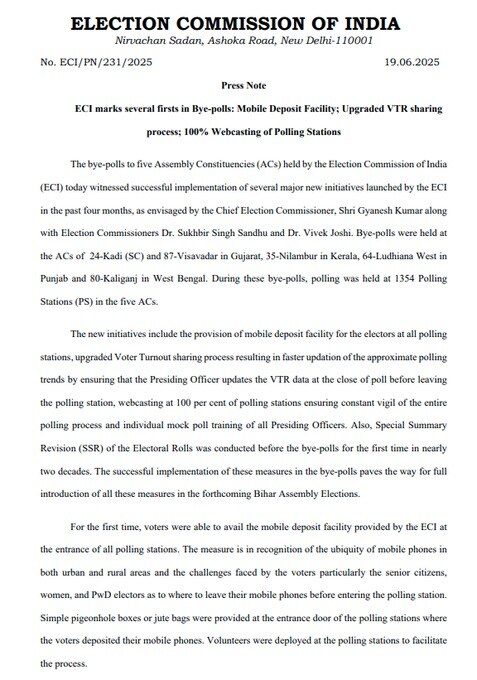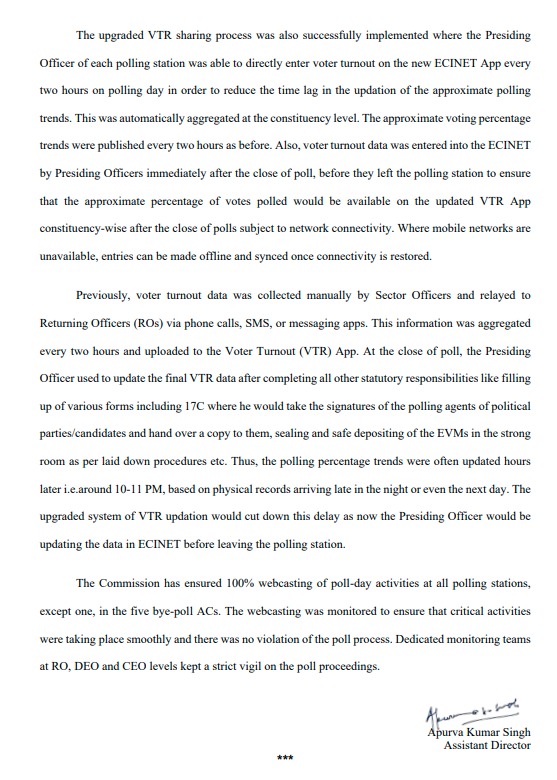Election Commission rolled out major reforms during recent bye-elections, including mobile deposit facilities for voters, real-time voter turnout updates via ECINET and 100% webcasting for transparency, efficiency and accessibility in polling.
The Election Commission of India (ECI) introduced several important reforms during bye-elections in five Assembly Constituencies (ACs) held recently.

The innovations aimed at making polling more efficient, transparent, and accessible to all voters. Polling took place in:
- 24-Kadi (SC) and 87-Visavadar in Gujarat
- 35-Nilambur in Kerala
- 64-Ludhiana West in Punjab
- 80-Kaliganj in West Bengal
Polling was conducted across 1,354 stations, marking a significant operational milestone for the ECI.


First-time mobile deposit facility for voters
For the first time, voters were allowed to deposit their mobile phones at polling stations before entering. This move recognised the unique challenges faced by:
- Senior citizens
- Women
- Persons with disabilities (PwD)
Volunteers helped manage phone deposit counters set up outside booths using simple storage units like pigeonhole boxes. This allowed voters to participate without carrying phones inside, ensuring adherence to ECI norms.
Real-time voter turnout updates via ECINET
Another major reform was the upgraded Voter Turnout Reporting (VTR) system. Previously, turnout data was collected manually and uploaded late in the evening. Now, Presiding Officers directly entered turnout data every two hours using the ECINET app. This change:
- Reduced delays in reporting voting trends
- Allowed constituency-level aggregation of real-time data
- Ensured better decision-making and transparency
At the end of polling, final data was uploaded immediately, avoiding the 10-11 PM lag that used to occur with physical records and manual reporting.
In areas with weak internet connectivity, offline entries were synced after the connection was restored.
100% webcasting ensures clean polling process
The ECI also ensured 100% live webcasting from polling stations across all five ACs, except one. The objective was to:
- Monitor real-time polling
- Detect violations instantly
- Enhance transparency in the election process
Monitoring teams at the Returning Officer (RO), District Election Officer (DEO), and Chief Electoral Officer (CEO) levels supervised proceedings throughout polling day.
A model for future elections
These successful innovations are part of the ECI's broader vision for polling reform in 2025, declared as the "Year of Reforms" by the Defence Ministry. They are expected to be scaled up in future elections, including the upcoming Bihar Assembly Elections.
The reforms not only simplify polling but also support ease of doing business in elections, encourage technological integration, and improve procedural clarity for all stakeholders.


